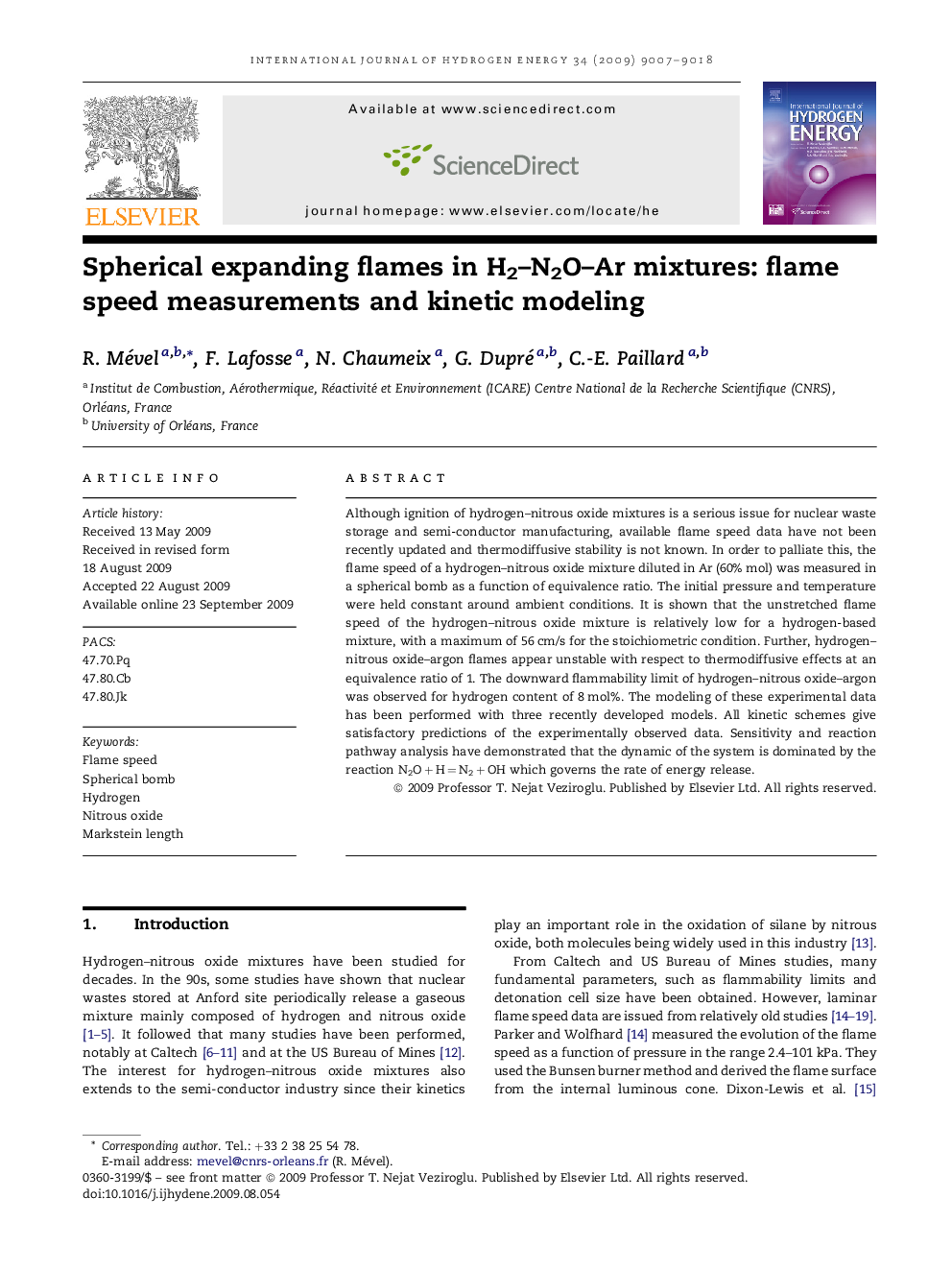| Article ID | Journal | Published Year | Pages | File Type |
|---|---|---|---|---|
| 1283034 | International Journal of Hydrogen Energy | 2009 | 12 Pages |
Although ignition of hydrogen–nitrous oxide mixtures is a serious issue for nuclear waste storage and semi-conductor manufacturing, available flame speed data have not been recently updated and thermodiffusive stability is not known. In order to palliate this, the flame speed of a hydrogen–nitrous oxide mixture diluted in Ar (60% mol) was measured in a spherical bomb as a function of equivalence ratio. The initial pressure and temperature were held constant around ambient conditions. It is shown that the unstretched flame speed of the hydrogen–nitrous oxide mixture is relatively low for a hydrogen-based mixture, with a maximum of 56 cm/s for the stoichiometric condition. Further, hydrogen–nitrous oxide–argon flames appear unstable with respect to thermodiffusive effects at an equivalence ratio of 1. The downward flammability limit of hydrogen–nitrous oxide–argon was observed for hydrogen content of 8 mol%. The modeling of these experimental data has been performed with three recently developed models. All kinetic schemes give satisfactory predictions of the experimentally observed data. Sensitivity and reaction pathway analysis have demonstrated that the dynamic of the system is dominated by the reaction N2O + H = N2 + OH which governs the rate of energy release.
